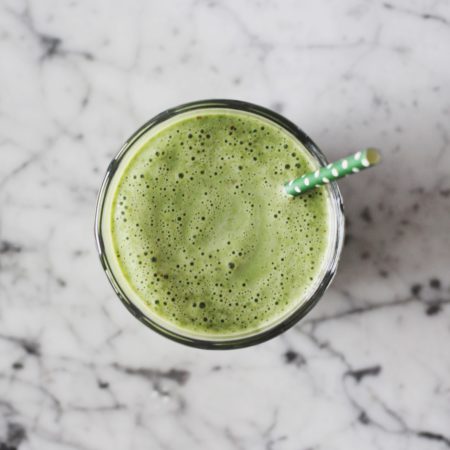The older I get, the more important proper skin care becomes. I interviewed skin health expert and dermatologist Dr. Mandy Wong from Kelowna Restore Dermapure to get her best tips on protecting and restoring sun damaged skin all year round to keep your skin healthy and glowing!
I used to think that sun care was only a summer thing… wrong! Dr. Wong graciously answered all of my burning questions about skin care, sunscreens, when to be concerned about sun damage (and what to look for) and when and how to repair sun damaged skin. I’ll let her take it away!

When it comes to keeping our skin looking young and healthy, what is the number one thing we can do?
The biggest thing you can do for your skin, especially when you live in the Okanagan with our beautiful sunny summers, is protect your skin from UV radiation. This needs to start from an early age, because the damage created may not evident when you are younger but does catch up with you as you age. As I do many full body skin exams, the difference between sun exposed skin on a person’s body is strikingly different from areas of the body that have always been protected by clothing. Changes can be seen as early as in the 40’s, with sun-damaged skin showing wrinkling, brown pigmented spots, spider veins, and looser skin. Unprotected sun exposure results in premature skin aging.
How effective is sunscreen at protecting against aging?
The most important things to look for in a sunscreen is an SPF rating of at least 30 and it is broad spectrum, meaning it protects from UVA and UVB. An easy way to remember what each type of UV radiation causes is to think of UVA as causing aging (wrinkles, loose skin) and UVB causing sunburn. Sunscreen works well so long as enough is applied and it is reapplied regularly. It is recommended to apply sunscreen every couple of hours and if you have been in the water, right after you towel off. This may seem difficult for women who do not want to reapply their make-up every time they reapply their sunscreen. Dry sunscreens that are brushed over make-up are an effective way to get around this concern.
There are so many different types of sunscreens: what should we look for when purchasing a sunscreen?
There are two main types of sunscreens that are commercially available:
- Mineral sunscreen which contain zinc oxide and titanium dioxide. These work by reflecting the UV radiation, preventing it from entering the skin.
- Chemical sunscreen includes ingredients such as oxybenzone, octinoxate and avobenzone. They absorb into the skin and then absorbs UV rays, converts the rays into heat, and releases them from the body.
Most physicians recommend mineral sunscreen as they are less irritating and a better fit for sensitive skin. Mineral sunscreens sit on top of the skin instead of being absorbed into the skin like chemical sunscreens, averting safety concerns related to chemical sunscreens. Many patients are leery of mineral sunscreens because they picture the unsightly white paste on their face. These days, however, mineral sunscreens can be very cosmetically elegant as the minerals have been micronized. They are much easier to blend into the skin, and many brands carry tinted mineral sunscreen.
What SPF do you recommend purchasing?
It is recommended to use a sunscreen with an SPF of at least 30, which blocks 97 percent of the sun’s UVB rays. Higher number SPF block slightly more of the sun’s UVB rays but no sunscreen can blook 100 percent of the sun’s UVB rays.
Wearing sunscreen should be a part of your everyday morning routine, even on cloudy days and in the winter. Even if most of the time you spend outside your home is in the car driving, the side windows of many cars protect against UVB but not against UVA. You will not burn from sun entering through the window, but UVA will damage the collagen and elastin in your skin leading to early skin aging.
How can you tell if your skin has been damaged by the sun?
Damaged skin can be seen as dry, crepey or wrinkled skin, brown pigmented spots, and spider veins or a general redness of the skin. An area where we often see sun damage is the neck. Skin on the sun damaged neck will appear red often in combination with brown and will be crepey or wrinkled in texture. If you look at the area under the chin, however, the skin will be lighter, of even color and smooth because it has been protected from the sun by the chin. We call this common condition poikiloderma of Civatte.
Now that summer is coming to an end, what steps can we take to treat sun-damaged skin? Can you un-do that damage?
Fall and winter is a great time to do damage control on the skin. Non-invasive technologies like the IPL or BBL can remove or reduce the brown and red spots caused by sun exposure. It can be done on any part of the body and causes no downtime. We generally do not perform this treatment in the sunny months as it is important that you do not have a tan when receiving the treatment.
If skin texture is your main concern or you want to prevent as much as possible the collagen loss in your skin that begins in your mid thirties, fractionated laser treatments are a great choice. There is generally some downtime associated with these lasers, but with some of the newer systems, down time can be five days or less. I recommend at least one treatment a year to optimize skin health. Prevention and treating sun damaged skin early is much easier compared treating advanced sun damage. However, lasers can be an amazing way to rejuvenate the skin no matter what condition your skin is in. Again, this is a great treatment to have when summer is over, because you should not be in the sun for at least a month afterwards.

When should we be concerned about sun damage to our skin? Are there warning signs or things to look out for when it comes to skin cancer?
Detecting skin cancers at an early stage is important in sun damaged skin. The most common skin cancer is basal cell cancer followed by squamous cell cancer. The least common skin cancer is melanoma, but it is the deadliest form of skin cancer.
It is good practice to perform regular self skin examinations and examine the skin of your family as well. Look for new spots, changing spots, or moles that look entirely different from the rest of the moles. Any spot that is new and persisting for 2 – 3 months should be checked. Spots that come and go are less likely to be concerning, because skin cancers stay and grow. Spots that bleed easily or ulcerated are concerning.
Thank you Dr. Wong for sharing your expertise! If there is anything else you are wanting to know about skin care let me know in the comments below!
Photo credit: Stephanie Lucile Photography






Understandably there is a range of damage of skin conditions and, therefore, treatments. What would be the price range for treatments typically run and do you usually require more than one treatment?
Hi Brenda sorry for the delay this went to the wrong folder! The price range varies greatly depending on the individual’s skin and the extent of treatments needed. It usually isn’t a one time thing but the team at Dermapure can give you more guidance if you are in this area and can get in for a personalized consultation or just want to call them!